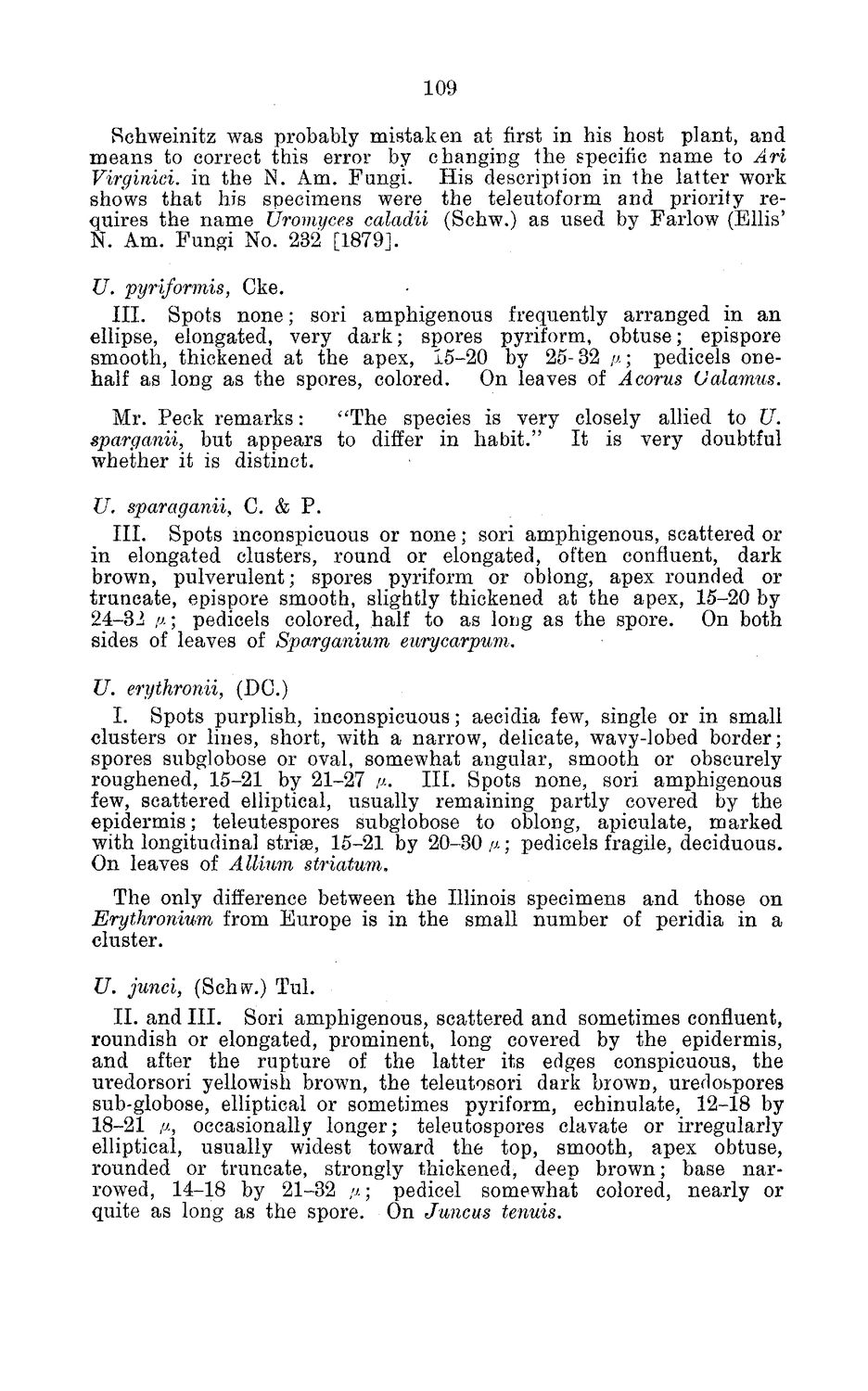| |
| |
Caption: Board of Trustees Minutes - 1884
This is a reduced-resolution page image for fast online browsing.

EXTRACTED TEXT FROM PAGE:
109 Schweinitz was probably mistaken at first in his host plant, and means to correct this error by changing the specific name to Ari Virginici. in the N. Am. Fungi. His description in the latter work shows that his specimens were the teleutoform and priority requires the name Uromyces caladii (Schw.) as used by Farlow (Ellis' N. Am. Fungi No. 232 [1879]. U. pyriformis, Cke. III. Spots none; sori amphigenous frequently arranged in an ellipse, elongated, very dark; spores pyriform, obtuse; epispore smooth, thickened at the apex, 15-20 by 25-32 /*; pedicels onehalf as long as the spores, colored. On leaves of Acorns Galamus. Mr. Peck remarks: "The species is very closely allied to U. sparganii, but appears to differ in habit." It is very doubtful whether it is distinct. U. sparaganii, C. & P. III. Spots inconspicuous or none; sori amphigenous, scattered or in elongated clusters, round or elongated, often confluent, dark brown, pulverulent; spores pyriform or oblong, apex rounded or truncate, epispore smooth, slightly thickened at the apex, 15-20 by 24-32 /.A; pedicels colored, half to as long as the spore. On both sides of leaves of Sparganium enrycarpum. U. erythronii, (DC.) I. Spots purplish, inconspicuous; aecidia few, single or in small clusters or lines, short, with a narrow, delicate, wavy-lobed border; spores subglobose or oval, somewhat angular, smooth or obscurely roughened, 15-21 by 21-27 /J.. III. Spots none, sori amphigenous few, scattered elliptical, usually remaining partly covered by the epidermis; teleutespores subglobose to oblong, apiculate, marked with longitudinal striae, 15-21 by 20-30 //; pedicels fragile, deciduous. On leaves of Allium striatum. The only difference between the Illinois specimens and those on Erythronium from Europe is in the small number of peridia in a cluster. U. junciy (Schw.) Tul. II. and III. Sori amphigenous, scattered and sometimes confluent, roundish or elongated, prominent, long covered by the epidermis, and after the rupture of the latter its edges conspicuous, the uredorsori yellowish brown, the teleutosori dark brown, uredospores sub-globose, elliptical or sometimes pyriform, echinulate, 12-18 by 18-21 AS occasionally longer; teleutospores clavate or irregularly elliptical, usually widest toward the top, smooth, apex obtuse, rounded or truncate, strongly thickened, deep brown; base narrowed, 14-18 by 21-32 >i; pedicel somewhat colored, nearly or quite as long as the spore. On Juncus tenuis.
| |